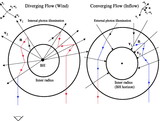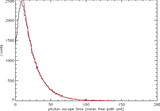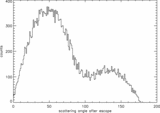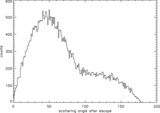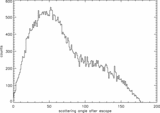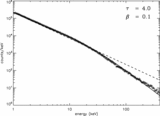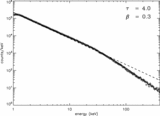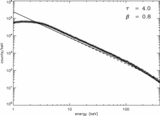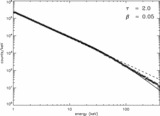Image Details
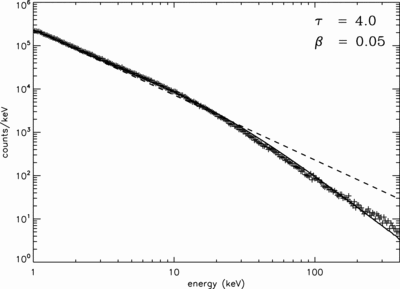
Caption: Fig. 4.
Emerging spectrum of a compact object through an outflowing plasma. The incident spectrum inside the outflowing plasma is taken to be a power law ﹩\varphi ( E) \propto E^{-\alpha }﹩ for which the energy index ﹩\alpha =0.5﹩. Outflow parameters are ﹩kT_{e}=0.1﹩ keV, ﹩\tau =4﹩, and ﹩\beta =0.05﹩, 0.1, 0.3, and 0.8. The photon emerging spectrum (crosses) is compared to the incident spectrum (dashed line) and the analytical downscattering spectrum (solid line; see eq. [7]). For ﹩\beta =0.05﹩, 0.1, 0.3, and 0.8, the best‐fit parameters are ﹩b=0.07﹩, 0.07, 0.11, and 0.45, respectively. For all cases we fix ﹩\varepsilon =0﹩. One can clearly see a bump in the MC‐simulated and analytical spectra in the low‐energy band around 10 keV for all ﹩\beta \lesssim 0.3﹩. Indeed, in the purely diffusive case that is shown in this plot, the photon number is conserved, so the downscattered high‐energy photons, which are removed from the high‐energy part of the incident spectrum, are detected at lower energy.
Copyright and Terms & Conditions
© 2007. The American Astronomical Society. All rights reserved. Printed in U.S.A.


